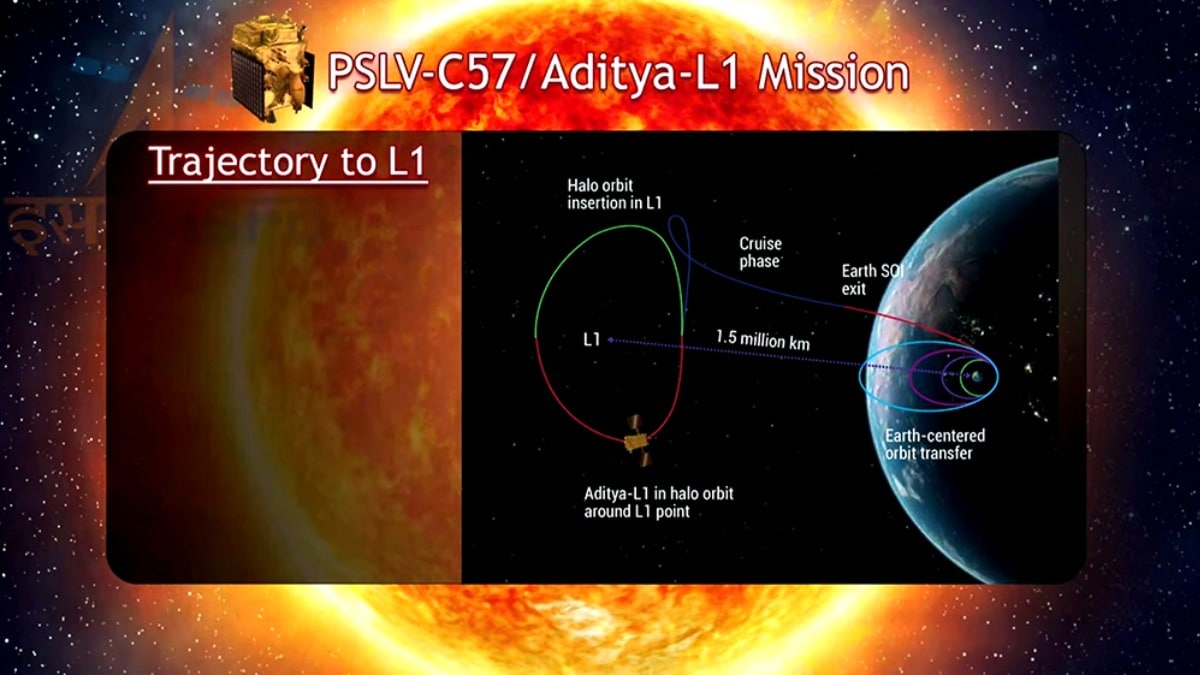

ISRO will perform the final manoeuvre on Saturday to inject Aditya-L1 spacecraft — the first space-based Indian observatory to study the Sun — into its final destination orbit, some 1.5 million kilometres from the Earth. According to ISRO officials, the spacecraft will be placed in a halo orbit around Lagrange point 1 (L1) of the Sun-Earth system, about 1.5 million km from the Earth. The L1 point is about one per cent of the total distance between the Earth and the Sun.
A satellite in a halo orbit around the L1 point has the major advantage of continuously viewing the Sun without any occultations/eclipses, they said, adding, this will provide a greater advantage in observing solar activities and its effect on space weather in real time.
“This manoeuvre (at around 4pm on Saturday) will bind the Aditya-L1 to a halo orbit around L1. If we don’t do this, there is a possibility that it will continue its journey, maybe towards the Sun,” an ISRO official told PTI on Friday.
The Polar Satellite Launch Vehicle (PSLV-C57) launched the Aditya-L1 spacecraft from the second launch pad of Satish Dhawan Space Centre (SDSC), Sriharikota, on September 2 last year.
After a flight duration of 63 minutes and 20 seconds, it was successfully injected into an elliptical orbit of 235×19500 km around the Earth.
The spacecraft underwent a series of manoeuvres thereafter and headed Sun-Earth Lagrange Point 1(L1), having escaped the Earth’s sphere of influence.
The spacecraft carries seven payloads to observe the photosphere, chromosphere and the outermost layers of the Sun (the corona) using electromagnetic and particle and magnetic field detectors.
“Using the special vantage point L1, four payloads directly view the Sun and the remaining three payloads carry out in-situ studies of particles and fields at the Lagrange point L1, thus providing important scientific studies of the propagatory effect of solar dynamics in the interplanetary medium,” according to the space agency.
The suits of Aditya L1 payloads are expected to provide the “most crucial information” to understand the problem of coronal heating, coronal mass ejection, pre-flare and flare activities and their characteristics, dynamics of space weather, and propagation of particles and fields, officials said.
The major science objectives of the Aditya-L1 mission are:
Catch the latest from the Consumer Electronics Show on Gadgets 360, at our CES 2024 hub.
Netflix India is about to drop a massive storytelling experience at WAVES 2025, and it's…
Punjab Kings won the toss and elected to field against Chennai Super Kings…
The Honda CR-V, one of the best-selling cars in America, is finally getting a feature…
Scientists believe they have found a way to improve warning systems for vulnerable communities threatened…
Samsung and GSMA have entered into a collaborative endeavour to improve connectivity on Samsung Galaxy-branded…
Vaibhav Suryavanshi in action during IPL 2025© AFP It was a special night…